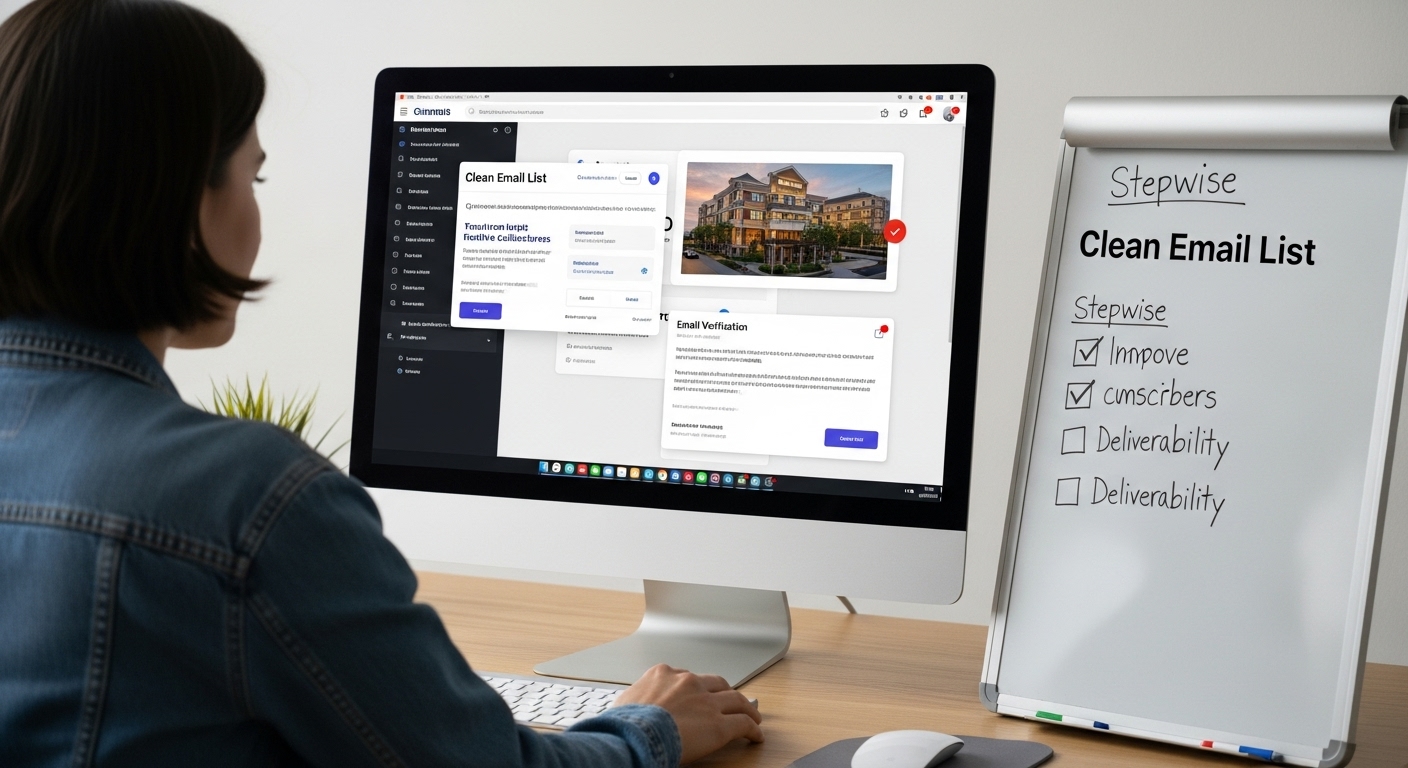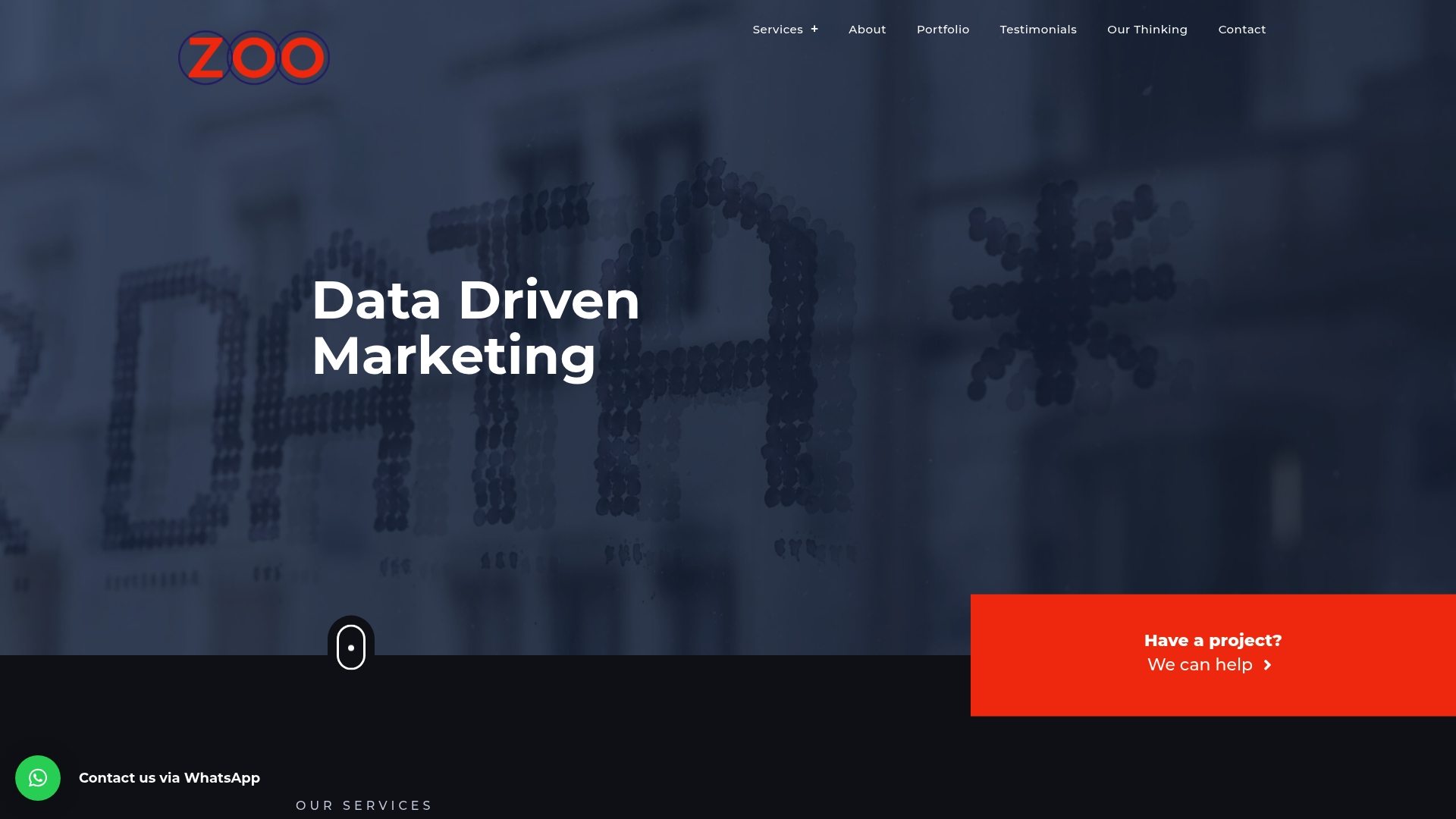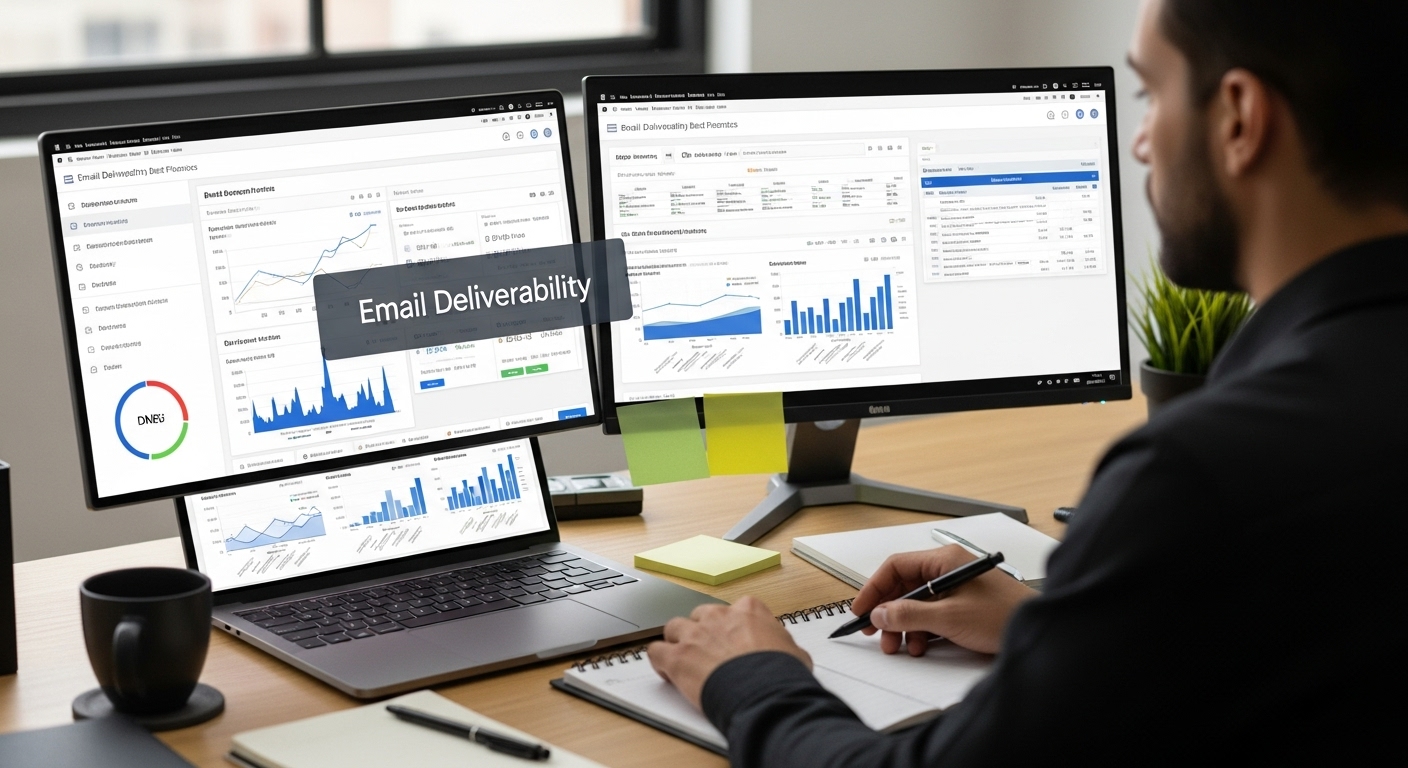Email deliverability sounds simple, right? Just hit send and hope everyone gets your message. But studies show that one in every six emails worldwide never reaches the inbox at all. Most South African businesses do not realise their emails could be landing in spam folders or getting blocked without warning. The shocker? A few minor tweaks to your email setup can instantly change those odds.
Table of Contents
- Step 1: Evaluate Your Current Email Setup
- Step 2: Configure Authentication Protocols
- Step 3: Maintain a Clean Email List
- Step 4: Craft Engaging and Relevant Content
- Step 5: Monitor Deliverability Metrics Regularly
- Step 6: Implement Continuous Improvement Strategies
Quick Summary
| Key Point | Explanation |
|---|---|
| 1. Evaluate Email Performance Metrics | Assess open rates, bounce rates, and spam classifications to identify current email health. Use this data to improve email deliverability. |
| 2. Implement Authentication Protocols | Configure SPF, DKIM, and DMARC to authenticate emails. These protocols build trust with email providers and enhance deliverability. |
| 3. Maintain a Clean Email List | Regularly audit your email list by removing inactive subscribers and validating email addresses to protect your sender reputation. |
| 4. Create Engaging Content | Focus on personalized, relevant, and concise content that provides value to recipients to reduce spam complaints and increase engagement. |
| 5. Monitor Key Deliverability Metrics | Consistently track delivery rates, open rates, and bounce rates to identify issues early and adapt your email strategy effectively. |
Step 1: Evaluate Your Current Email Setup
Before diving into email deliverability best practices, you must thoroughly assess your current email infrastructure and performance. Understanding your existing setup provides a critical foundation for improving communication effectiveness and ensuring your messages reach intended recipients.
Comprehensive Email Performance Analysis
Start by conducting a comprehensive review of your current email system. Gather historical data on key performance metrics that reveal the health of your email communications. Open rates, bounce rates, and spam classifications offer crucial insights into how your emails are currently performing. Retrieve this information from your email service provider’s analytics dashboard or email marketing platform.
Examine your email sender reputation, which directly influences deliverability. According to San Diego State University, understanding your audience and measuring success through delivery metrics is fundamental. Check your sender score using online reputation monitoring tools, which evaluate factors like email volume, complaint rates, and list quality.
Review your existing email lists for hygiene and engagement. Identify and segment inactive subscribers, invalid email addresses, and potential spam traps. High-quality email lists significantly impact your deliverability rates. Remove email addresses that have not engaged with your content in the past six months, as these can negatively impact your sender reputation.
Technical Infrastructure Assessment
Evaluate your technical email configuration, focusing on authentication protocols. Verify that your DNS records include Sender Policy Framework (SPF), DomainKeys Identified Mail (DKIM), and Domain-based Message Authentication, Reporting, and Conformance (DMARC). These authentication mechanisms validate your email’s legitimacy and protect against potential spoofing.
Consider your current email service provider and their deliverability support. Some providers offer advanced tools and insights to help improve email performance. If your current provider lacks robust deliverability features, it might be time to explore alternative solutions that provide comprehensive tracking and optimization capabilities.
By systematically assessing your email setup, you establish a clear baseline for improvement. This evaluation sets the stage for implementing targeted strategies to enhance your email deliverability and ensure your messages consistently reach their intended audience.
Step 2: Configure Authentication Protocols
Authentication protocols form the backbone of robust email deliverability, creating a secure framework that validates your email communications and protects your sender reputation. By implementing these technical safeguards, you establish trust with email service providers and reduce the likelihood of your messages being flagged as spam.
Understanding Email Authentication Mechanisms
Email authentication involves configuring three primary protocols: Sender Policy Framework (SPF), DomainKeys Identified Mail (DKIM), and Domain-based Message Authentication, Reporting, and Conformance (DMARC). Each protocol serves a unique purpose in verifying the legitimacy of your email communications.
![]() According to the Cybersecurity and Infrastructure Security Agency, these authentication methods are critical for restricting unauthorized email access and preventing potential spoofing attempts.
According to the Cybersecurity and Infrastructure Security Agency, these authentication methods are critical for restricting unauthorized email access and preventing potential spoofing attempts.
Begin by setting up SPF, which defines authorized mail servers for your domain. Access your domain’s DNS management interface and create a TXT record that lists all IP addresses and servers permitted to send emails on your behalf. This record tells receiving email servers which servers are legitimate sources for your domain, significantly reducing the chances of email rejection or spam classification.
Next, implement DKIM, which adds a digital signature to your email headers. This cryptographic authentication method ensures that emails have not been tampered with during transmission. Work with your email service provider to generate DKIM keys and configure the corresponding DNS records. The signature acts like a digital seal, providing verifiable proof of your email’s origin and integrity.
Comprehensive DMARC Implementation
The final and most comprehensive authentication protocol is DMARC, which builds upon SPF and DKIM. DMARC allows you to specify how receiving servers should handle emails that fail authentication checks. Configure your DMARC policy to instruct email servers on processing unauthenticated messages. Start with a monitoring policy that does not block emails, allowing you to gather insights into potential authentication issues.
Carefully review and test each authentication protocol, ensuring seamless configuration across your email infrastructure.
Below is a summary of essential email authentication protocols, including their purpose, how to implement each one, and their impact on your deliverability.
| Protocol | Purpose | How to Implement | Deliverability Impact |
|---|---|---|---|
| SPF | Authorises specific mail servers to send email for your domain | Add a TXT record to your domain’s DNS listing allowed senders | Reduces unauthorised senders and lowers spam risk |
| DKIM | Verifies email integrity and sender authenticity | Generate DKIM keys via your provider and update DNS records | Adds a digital signature, helping prevent tampering |
| DMARC | Sets policy for handling unauthenticated emails | Publish a DMARC policy record in DNS after setting up SPF & DKIM | Provides reporting and boosts trust with ISPs |
Most email service providers offer guidance and support for implementing these protocols. Consider consulting with your IT team or email service provider to ensure precise technical configuration.
Successful authentication protocol implementation requires ongoing monitoring and periodic updates. Regularly review your DNS records, check authentication reports, and adjust your configurations to maintain optimal email deliverability and security.
Step 3: Maintain a Clean Email List
Maintaining a clean email list is crucial for achieving optimal email deliverability and ensuring your messages reach engaged recipients. A well-curated email list not only improves your sender reputation but also increases the effectiveness of your communication strategies.
Systematic List Hygiene Practices
Begin by conducting a comprehensive audit of your existing email list. Remove inactive subscribers who have not engaged with your emails in the past six months. These inactive contacts can negatively impact your sender reputation and reduce overall email performance. Use your email marketing platform’s engagement tracking tools to identify and segment these less responsive subscribers.
According to Columbia University’s Office of Public Affairs, staying aware of unsubscribe requests and outdated email addresses is critical for maintaining list accuracy. Implement an automated process to immediately remove email addresses that bounce back or generate spam complaints. Most email service providers offer built-in tools that can help you manage these removals efficiently.
Validate email addresses using professional email verification services.
 These tools check for syntax errors, domain validity, and potential spam traps. Run your entire email list through verification software at least quarterly to eliminate incorrect or potentially harmful email addresses. This process helps reduce bounce rates and protects your sender reputation by ensuring you are only sending emails to legitimate, active addresses.
These tools check for syntax errors, domain validity, and potential spam traps. Run your entire email list through verification software at least quarterly to eliminate incorrect or potentially harmful email addresses. This process helps reduce bounce rates and protects your sender reputation by ensuring you are only sending emails to legitimate, active addresses.
Engagement-Driven List Management
Develop a re-engagement strategy for subscribers who have become less active over time. Create targeted campaigns designed to reignite interest, offering special content, exclusive promotions, or personalized incentives. If subscribers do not respond to these re-engagement attempts, consider removing them from your primary list to maintain high-quality contact engagement.
Implement a double opt-in process for new email subscribers. This method requires users to confirm their email address through a verification link, ensuring that only genuinely interested individuals are added to your list. Double opt-in helps prevent fake or mistyped email addresses from entering your database and demonstrates a commitment to maintaining a high-quality email list.
Regularly monitor your email list’s health by tracking key metrics such as open rates, click-through rates, and unsubscribe rates. These indicators provide insights into your list’s overall quality and engagement levels. By consistently managing and refining your email list, you create a more targeted and effective communication strategy that supports strong email deliverability.
Use this checklist to maintain a clean and effective email list by ensuring ongoing hygiene and maximum recipient engagement.
| Action | Frequency | Key Benefit |
|---|---|---|
| Remove inactive subscribers | Every 6 months | Improves sender reputation |
| Validate email addresses | Quarterly | Reduces bounce rates |
| Implement double opt-in | For all new sign-ups | Prevents fake addresses |
| Run re-engagement campaigns | As needed | Boosts list engagement |
| Remove bounced/spam complaint addresses | Immediately upon trigger | Maintains list quality and compliance |
Step 4: Craft Engaging and Relevant Content
Creating compelling email content is a critical component of successful email deliverability. Your message must not only capture attention but also provide genuine value to recipients, encouraging engagement and reducing the likelihood of being marked as spam.
Strategic Content Development
Start by understanding your audience deeply. Personalization goes beyond using a recipient’s name – it requires crafting content that speaks directly to their specific needs, interests, and pain points. Segment your email list based on demographics, past interactions, and engagement history to develop targeted messaging that resonates with each group. For those looking to dive deeper into targeted marketing strategies, our guide on digital marketing for beginners offers additional insights.
According to the University of Colorado, keeping messages concise and placing important information at the beginning are crucial. Structure your emails with a clear hierarchy, ensuring the most critical information appears first. Use descriptive subject lines that accurately reflect the email’s content, avoiding clickbait or misleading language that could trigger spam filters.
Develop a consistent brand voice that builds trust and recognition. Your email content should feel like a natural extension of your overall communication strategy. This means maintaining a tone that aligns with your brand’s personality while providing clear, valuable information. Write as if you are speaking directly to a trusted colleague, using language that is professional yet approachable.
Content Relevance and Engagement
Focus on creating content that solves problems or provides tangible benefits to your recipients. Each email should answer the implicit question: “What’s in it for me?” Include clear calls-to-action that guide readers toward meaningful interactions. Whether it’s accessing exclusive content, claiming a special offer, or learning something new, your email should motivate recipients to take the next step.
Carefully manage the frequency and timing of your emails. Bombarding subscribers with too many messages can lead to disengagement and increased spam complaints. Establish a consistent yet reasonable email schedule that keeps your audience informed without overwhelming them. Monitor engagement metrics like open rates, click-through rates, and conversion rates to continuously refine your content strategy.
Remember that email deliverability is an ongoing process of testing, learning, and adapting. Regularly solicit feedback from your subscribers, conduct A/B tests on different content approaches, and remain committed to providing value with every message you send.
Step 5: Monitor Deliverability Metrics Regularly
Monitoring email deliverability metrics is not just a recommended practice but a critical strategy for maintaining the health and effectiveness of your email communications. By consistently tracking key performance indicators, you can proactively identify and address potential issues before they significantly impact your sender reputation.
Essential Metrics and Tracking Techniques
Delivery rates, open rates, and click-through metrics form the cornerstone of comprehensive email performance analysis. Begin by establishing a systematic approach to tracking these indicators using your email service provider’s analytics dashboard or specialized email monitoring tools. According to San Diego State University, measuring these metrics provides crucial insights into the success of your email campaigns.
Focus on tracking bounce rates, which indicate the percentage of emails that cannot be successfully delivered. Hard bounces represent permanently undeliverable emails and should be immediately removed from your list. Soft bounces, which are temporary delivery issues, require careful monitoring. High bounce rates can severely damage your sender reputation, so address these proactively by cleaning and updating your email list regularly.
Pay close attention to spam complaint rates. Even a small number of spam reports can trigger email service providers to block or filter your messages. Most email marketing platforms provide detailed reporting on spam complaints, allowing you to identify potential issues with content, frequency, or list quality that might be triggering these negative interactions.
Advanced Deliverability Monitoring Strategies
Implement a comprehensive monitoring system that goes beyond basic metrics. Use specialized email deliverability tools that provide detailed insights into your sender reputation, IP reputation, and domain health. These tools can help you identify potential blacklist issues, track your sender score, and provide recommendations for improving email performance.
Establish a regular review schedule for your email metrics. Set aside time monthly or quarterly to conduct a thorough analysis of your email performance. Look for trends in engagement, identify declining metrics, and develop targeted strategies to address any emerging challenges. Consider creating a dashboard that consolidates key deliverability metrics, making it easy to track your progress over time.
Remember that email deliverability is an ongoing process of optimization. No single metric tells the complete story, so approach your monitoring with a holistic perspective. Continuously experiment with different content strategies, segmentation approaches, and sending practices to improve your overall email performance.
Step 6: Implement Continuous Improvement Strategies
Continuous improvement is the cornerstone of maintaining exceptional email deliverability. This final step transforms your email strategy from a static approach to a dynamic, adaptive system that evolves with changing digital communication landscapes and audience expectations.
Strategic Experimentation and Optimization
A/B testing becomes your primary tool for refinement, allowing you to systematically experiment with different elements of your email communications. Test variations in subject lines, content structure, sending times, and visual design to understand what resonates most with your audience. According to the University of Colorado, audience segmentation and content relevance are critical components of successful email marketing strategies.
Develop a structured testing methodology that allows you to isolate and measure specific variables. Create controlled experiments where you change only one element at a time, such as subject line length, call-to-action placement, or email design. Track key performance metrics like open rates, click-through rates, and conversion rates to understand the impact of each modification. This data-driven approach enables you to make informed decisions about your email strategy.
Adaptive Email Infrastructure Management
Establish a regular review cycle for your email authentication protocols and technical infrastructure. Technology and email service provider requirements evolve rapidly, so staying current is crucial. Schedule quarterly audits of your SPF, DKIM, and DMARC configurations to ensure they remain optimized and aligned with the latest security standards.
Consider implementing advanced segmentation strategies that go beyond basic demographic information. Develop dynamic segmentation approaches that adapt based on subscriber behavior, engagement history, and interaction patterns. This might involve creating more nuanced subscriber groups that receive highly personalized content tailored to their specific interests and engagement levels.
Cultivate a culture of continuous learning within your email marketing team. Encourage team members to stay informed about emerging email deliverability trends, attend webinars, participate in professional forums, and share insights. Email marketing is a dynamic field, and staying ahead requires a commitment to ongoing education and adaptability.
Remember that continuous improvement is not about making massive, disruptive changes but about making small, incremental adjustments that compound over time. Approach your email strategy with patience, curiosity, and a willingness to experiment. By maintaining a flexible and data-driven approach, you’ll create an email communication system that consistently delivers value to your audience.
Ready to Unlock Real Email Deliverability Results?
Struggling with poor open rates, persistent spam issues or a sender reputation that just won’t budge? You are not alone. Many business owners and marketers face these exact problems every day. As detailed in this article, proper email authentication, expert list hygiene and strategic content are vital. But working alone, you risk missing hidden technical pitfalls or losing valuable engagement opportunities. Our team at Zoo Digital specialises in data-driven marketing and seamless tracking implementation, exactly what you need to achieve proven email deliverability best practices.

Why leave your success up to chance? Connect with the experts at Zoo Digital, or explore our latest tips in the Uncategorized Archives – Zoo Digital. Transform your campaigns with robust CRM setups, advanced automations and list management tailored to your business. Act now to build email communications that work harder for you. Speak to us today and start achieving inbox results that matter.
Frequently Asked Questions
What steps can I take to evaluate my current email deliverability setup?
Begin by conducting a comprehensive review of your email system, focusing on performance metrics such as open rates, bounce rates, and spam classifications. Check your sender reputation and email list hygiene to identify inactive subscribers and invalid addresses.
How do I configure authentication protocols for my emails?
You should implement three key protocols: SPF, DKIM, and DMARC. Configure SPF by adding a TXT record to your DNS that specifies authorized mail servers. Implement DKIM by adding a digital signature to your emails and DMARC to set policies for how emails that fail authentication should be handled.
Why is maintaining a clean email list important for deliverability?
A clean email list ensures you’re only sending messages to engaged recipients, which improves your sender reputation and boosts email performance. Remove inactive subscribers and validate email addresses to maintain list quality.
What kind of content should I include in my emails to improve engagement?
Focus on creating personalized, relevant content that addresses your audience’s needs and interests. Use clear calls-to-action and keep your emails concise to encourage engagement and reduce the likelihood of being marked as spam.
Recommended
- Digital Marketing for Beginners: 2025 Guide for Small Businesses – Zoo Digital
- Digital Marketing Terms Explained for Small Businesses 2025 – Zoo Digital
- How to Build a Marketing Strategy for Small Businesses in 2025 – Zoo Digital
- How to Start Online Advertising: Guide for Small Businesses 2025 – Zoo Digital

